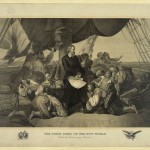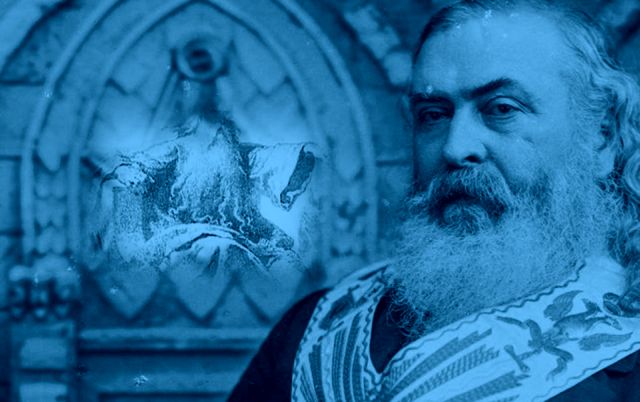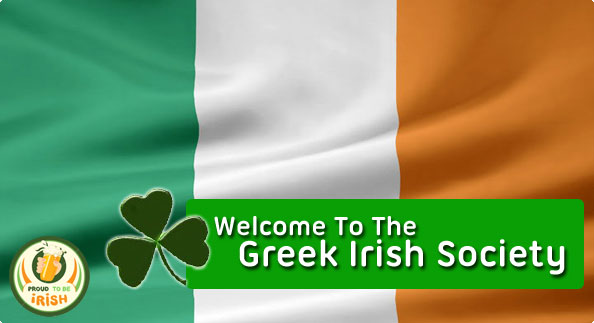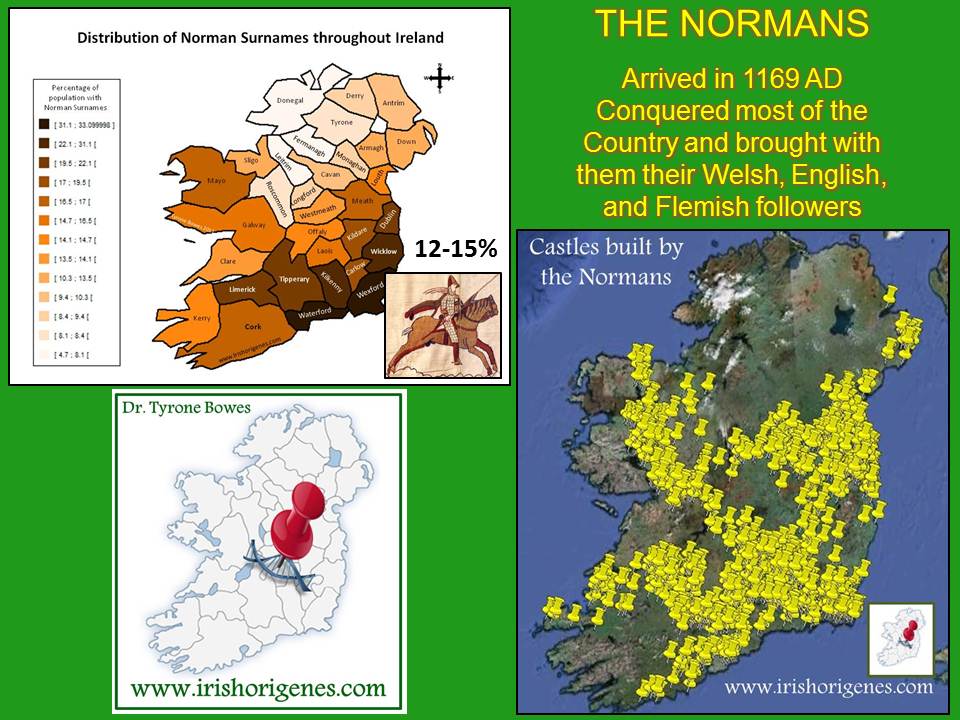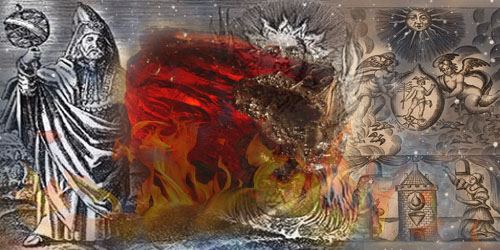oIt is the unanimous testimony of almost all Irish Historians, that the Tuath-de-Danaans (Tribe of Dan) were learned, and well skilled in Science and Magic. For many hundreds of years thereafter, Ireland became celebrated as the main center for learning and the export and import of a group of wise men known in the Old Gaelic language as the Ollam (Ollamh, Ollave, Olaf) and to their Brethren of the East, the Ulam.
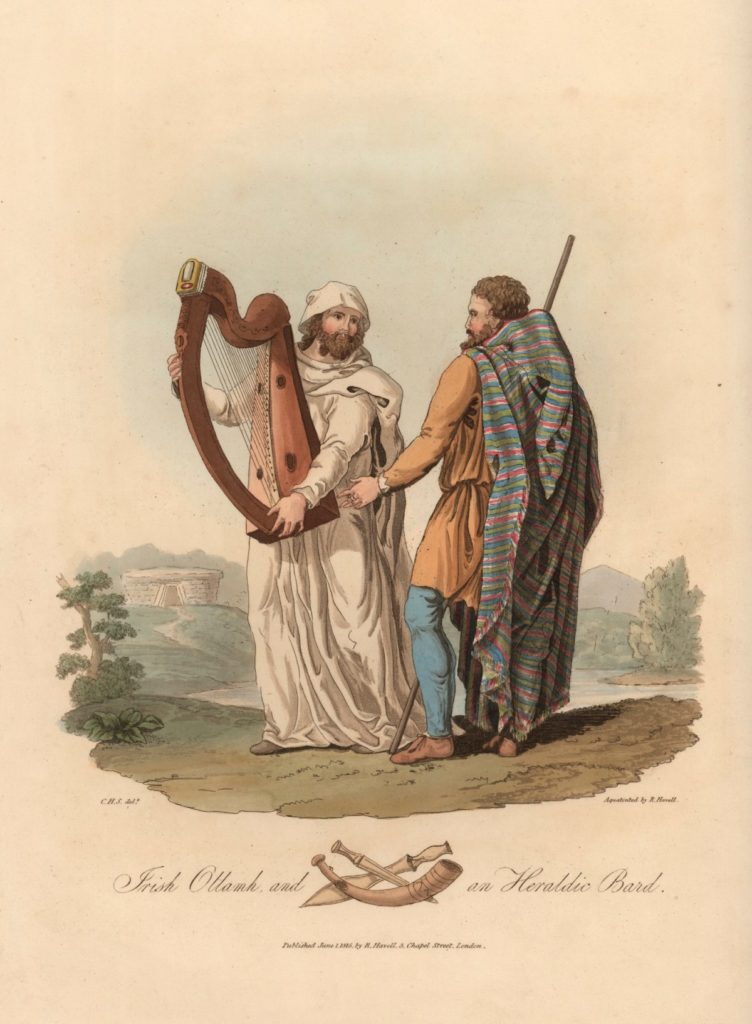
This history is so widely attested that it must be taken as an unquestionable fact, because it is recorded by all Historians of the Celtic race. The many stories of their sagas and exploits are told throughout all early Irish literature for they were its creators.
It is from these words that we learn long before the Christian era, the Ollam of the Irish and Scottish nations were some of the most powerful people who ruled from the Hills of Tara for well over 1500 years or more. Their legal counsels and judges could issue edicts that could make or dethrone a king in a day and thus were endowed with a distinction equal to that of the king.
The Supreme Ollam sat next to the king at the table where he was privileged to wear the same number of colors in his clothes as the king and queen, while all other ranks whether warriors or fellow Ollam had fewer colors. You will find that from the most remote periods of early history in the Irish annals to modern times that we can trace a succession of the Ollam who were honored on a level of noble kings and warriors.
Today we see this tradition of colors identifying rank carried on mainly in Catholicism and the military. Also, to this day in Ireland, an ollam or ollamh means as it did then “a doctor, professor and or scholar of any kind of learning.” In other countries around the globe such as in the Islamic countries, these learned me are known as the Ulam of Mulah.
The Ollams power was derived from their extensive knowledge that in ancient times past was always hereditarily passed down to them which included all types of sciences, literature, religion, history, laws, heraldry, genealogy, logic, reasoning and even magic, to name a few. Their schools became the most celebrated in the Western world under the name of Mur-ollam-hara (MurOllam-han), meaning the “College of the Learned or the College of Doctors.” (Four Masters, p. 293. – vide O Halloran, Book iv., chap. 1, p. 132).
Like their Eastern Ulam ancestors, the professions of the Irish Ollam, whether it be poetry, art, history, building, law and even propaganda, had invariably run in families, so that members of the same household often devoted themselves for many generations to their particular craft.
I believe it was from thousands of years of training and specializations passed down in families that today we see many gifted people who seem born to do specific jobs whether they are world-class scientists, religious scholars, builders, lawyers, judges, poets, singers, and leaders, to name a few.
These various classes of Ollams had produced people who were specialized in their trades and were thus segmented and paid on these abilities. For example, the Book of Rights states that a king kept in his household an Ollam of each profession, who was well paid for his services. The literary Ollam from forbidden from sharing his work with the lower class people and only with kings and chiefs and with their guests.
For the meaning of the word, nobility is “able to know.”
Poets were charged with entertaining the lower grades to attend a lower class of people. The prices for the compositions of the several grades of poets may be seen in the “Small Primer,” Br. Laws, v., pp. 57-71.
A an Ollam “He was also supposed to know the prerogatives, rights, duties, restrictions, tributes, of the king of Ireland, and of the provincial kings and the poet or the learned “historian” who does not “know the prerogatives and the prohibitions of these “kings is not entitled to visitation or to sale” [of his compositions].
It was also said that the Ollam was expected, if asked, to repeat the whole statement from memory, “so that he can recite them all at each noble meeting.”t As a learned man he was expected to answer reasonable questions, and explain difficulties;
“He is great to expound, and he expounds and solves questions”—says Cormac’s Glossary (127, “Ollamh”).
SONS OF THE IRISH OLAM
In the ancient mythologies of Ireland listing “the most famous and noble persons of the Tuatha De Danann,” we find “the six sons of Delbaeth, of Ogma, namely, Fiacadh, Ollamh, Indaei, Brian, Iuchar, and Iucharba.”
The Pictish Chronicles more accurately listing the genealogies which can coincide with science informs us that they were from Ollamhan, from whence comes Mur Ollamhan at Tara or Teamhair (Hill of Tara), to Fiacha, son of Baedan, who fettered the hostages of Erin and Alban.
It was from the Clan Baedan (Son of Dan) who became the de facto father of the senior line of the Hy-Niall kings (King of Ireland and Scotland) because he was the great-grandson of Niall of the Hostages and his grandmother was Scottish Princess of Dalriada named Erca which united the two ancient kingdoms of Scotland and Ireland into one.
We learn that from him the feast of Teamhair (Hill of Tara) was first instituted at Mur Ollamhan. Then, after naming his six successors, the legend adds, “These then are the seven kings that ruled over Erin of the Cruithnigh of Alban.”
You will find these same seven kings are also placed on a list of the mythic pagan kings of Ireland with the first being Olam Fodla is described as “a prince of the most comprehensive knowledge, that ever sat on the Irish Throne is credited with erasing all falsehoods—and he punished severely all historians who made improper representations” (Keating, vol. 1, p. 197).
Ollamh Fodla who is also attributed to one of the most important tasks which is the tribal organization of his people; for according to the Annals of the Four Masters, ‘it was he also that appointed a Toisech over every Triocha Ceud or barony, and a Bruighigh over every Baile or township, who were all to serve the king of Erin.”
It was from these ancient clans of Ireland where we find the professions of some of the most famous Ollams in history who were instructed to teach their own children, and kinsmen, to always be their successors and then with the advent of the New Testament (New Law) for the global Gentiles – they were instructed as it were to “Go ye and teach all nations.”
It was from these families and the schools of the Olam in Ireland which gave rise to some of the most famous Saints of the early Church such as Saints Columba and Patrick whose disciples became masters in the Christian religion. Their Great Work for bringing law, order and learning around the globe to their English, German, and French Brethren that in the years following their deaths, Ireland was termed Sanctorum Patria, or the Saints’ Country.
Author Charles O’Connor, eloquently explains their missionary efforts in his “Dissertation on the History of Ireland,”:
“The monks set up schools, in which they educated the youth, not only of the island but of the neighboring nations. They sent their missionaries in shoals into the continent, converting its heathen and confirming its Christian inhabitants; set up schools in those parts; and laid the foundations of the most flourishing universities in Europe.
They taught the Saxons and Normans the use of letters, and they converted the Cruthneans or Picts to Christianity by the preaching of Columbkille, who quitted his right of succession to the throne of Ireland, to reign over the hearts of a foreign people, enemies to his own nation.”
This family line had produced several of the most well known Gnostic luminaries in the early Celtic Church. In the course of history, that had gone by the name of Baedan or Baithen, son of Brendan, and were the legal successors of Saint Columba as Abbot of Iona.
It was at this time that Saint Columba had declared “Power by Baedan of the yellow hair will be borne from Ireland on him [the steed].”
0 God, wilt thou not drive off the fog, which envelopes our number,
The host which has deprived us of our livelihood,
The host which proceeds around the cams’!
He is a son of storm who betrays us.
My Druid,—he will not refuse me,—is the Son of God, and may he side with me;
How grandly he bears his course, the steed of Baedan” before the host;
Power by Baedan of the yellow hair will be borne from Ireland on him [the steed].
So we know that Baedan who was Monarch of Ireland jointly with his nephew, Eochaidh, in the year 566 after he became the immediate successor of Saint Columba in the 6th century.
It is said that he ruled Iona for only three years, but had left his 12 sons to take his place upon his death in which the Irish Annals record the death of Baedan MacCoirill, King of Ulster, and a naval expedition in the year 598. St. Adamnan, in recording the death of St. Columba, tells us that the dying words of the Apostle of Iona, as he was transcribing Psalm 53, were: “I must stop here, let Baithéne write what follows”.
Baithéne had been looked on as the most likely successor of St. Columba, and so it happened that on the death of that great apostle, in 596, the monks unanimously confirmed the choice of their founder. Baithéne was in high esteem as a wise counselor, and his advice was sought by many Irish saints, including Saint Fintan Munnu ofTaghmon. Abbey St Bathans in Berwickshire (southeast Scotland) may be named after him.
Here is a shortlist of some of the Saints of Iona from the House of Baedan (Baothin) who took the name of Beadan (Baothin):
* Baedan, son of Muircheartach, joint-king of Ireland, 555, 562, 563.
* Baedan, son of Ninnidh, son of Fearghus Ceannf hoda, slain, 567.
* Baothin – Son of Brendan and the founder of the House of Baedan. – He was also known by the various spellings such as Baedan, Buadan, Baithen called Baitan Mor. He was the legal successor of Saint Columba, died, 595.
* Baedan Mac-Ua-Cormaic, abbot of Cluain-micNois, died, 663.
* Baedan, abbot of Beannchair, died, 665.
* Baedan, bishop of Inis-Bo-finne, died, 711.
* Baedan, of Cluain-tuaisceirt, died, 804.
* Baedan, abbot of Birra, died, 926.
It was from the family of Badan that naturally produced several generations of learned and professional men known as the Ollam who were on a level, and social rank, with the chieftain grades. From this clan, I believe that there would be numerous other families who were either cousins or allies who would be given royal titles for their Great Work.
I believe that many of these Ollam clans would be legally signified by simply adding an O’ to the beginning of their names which is something we see only used in ancient Ireland and also the appeleation of Mac would be used meaning “Great of Chief” for the “Chieftan” families of the Ollams.
Ollam Clans who were the most distinguished amongst the professor castes are listed in The History of Ireland from the Earliest Period by Geoffrey Keating who had written;
“The most distinguished amongst the professor castes were, in Ulster, the O’Cleries, O’Gnives, the O’Slevins, O’Husseys, O’Donnellies, O’Dalies, O’Mulligans, O’Farrellies and O’Curneens; in Connaught and Meath, the O’Maelconaries, Mulconries, or Conries, the MacFirbisses, the O’Duigenans, the O’Dugans, the O’Higgins, and O’Coffees.
The O’Dunns and MacKeoghs, were the chief bards of Leinster; the MacGraths, the O’Dineens, the MacBruodins or Brodies, the MacCurtins, and MacGowans, and some of the O’Keefes, in Munster. The O’Dalies were found distinguished as poets in all parts of Ireland.
“In music the ancient Irish were highly celebrated. It is stated in the Chronicle of IIanmer, p. 197, that in the latter end of the eleventh century, about A. D 1098, Griffith ap Conan, Prince of Wales, who had resided a long time in Ireland, brought over with him, to Wales, “divers cunning musicians, who devised in manner all the instrumental music upon the harp and crowth that is there used, and made laws of minstrelsy to retain the musicians in due order.’
Thus it appears that the famous Welsh bards were indebted for their knowledge of the harp chiefly to the Irish. The Irish in former ages were the most famous harpers in Europe, and continued eminent in the art down to modern times.” Turlough O’Carrolan, our last very eminent harper and composer, died in the year 1738.”
There were various specialties and names for the professions of the Ollam. For example, a Doctor of Law was called “Ollamh re Dighe” (dlee); a Doctor of History was styled “Ollamh ré Senchas” and a Ollamh releighes” (ollave re lyas) meant medical doctor. (The History of Ireland from the Earliest Period to the English Invasion By Geoffrey Keating)
Some of the most eminent of Ollam would become tutors to kings and also be the founders of various Mur-ollam-hara (MurOllam-han) schools around the world in which they set up a barony, and a bruighean (brugh, brughaidh, breean or breen) over every Baile or township from which they had settled.
This old Irish word bruighean (bru, brugh, brughaidh, breeoge, breean or breen) appears to mean “royal house or royal mansion” and was used to signify the royal house and place of their barony (barune) or government.
This word Bruighean occurs in the Feast of Dunnangedh in relation to pillars and the old Tribes “that his progeny should still have the legitimate possession of Tara with its supporting families, and the old Tribes of Meath perpetually and forever.”
We find several place names for various Irish townlands located in Antrim, Donegal, Tyrone, Limerick, and in Tipperary. For example, the town Breenaun in the parish of Ross, Galway; and Breenagh in the parish of Conwal, Donegal, and Breeoge, in the parish of Kilmacowen—Bruigheog.
THE IRISH SONS OF OLAM ATTACKED FOR THEIR GNOSIS
In Moore’s History of Ireland, we learn that in the year 812, the Danes burned the abbey of Derry, and massacred the clergy and students and their schools and sacred edifices of Armagh were burned in the ninth century, but the disaster was soon overcome.”
Eminent scholars from abroad are found visiting Armagh in the next century, and during the interval of its misfortunes education throve at Clonmacnois, Devenish, and Kildare. The annals of Munster record that, in the year 812, the Danes burned the abbey of Derry, and massacred the clergy and students. Probus, author of a life of St. Patrick, in two books, was chief lecturer of the school of Slane, and met his death during an attack made by the Danes upon the church, in the year 950. Clonmacnois was cruelly pillaged in its turn.
So many eminent Irish Olmam had made such an impact on Continental European royal courts and had gone on to become Catholic Bishops that they excited the jealousy of other scholars in various countries.
In the tenth century, the Irish Olman were denounced by their competitors who launched an ad hominem attacks calling them the “Episcopi Vagantes” and making jealous decrees of different councils such as in Calcuith that went so far as to declare that no Irishmen should be admitted to clerical functions—“et Scoti non admittentur sacra ministrare.”
CONCLUSION
Since the most ancient times, it has been a policy of kings to recognize and promote thier tutors as the most learned men of their kingdoms by bestowing upon them royal dignities of honor and trust in their court.
For example, we find this tradition in Ancient Greece when in 343 B.C., King Philip II hired the philosopher Aristotle to tutor Alexander the Great philosophy, poetry, drama, science, and politics over the course of only three years. We find this also in the Old Celtic storied like in the relationship between King Arthur and his tutor Merlin.
The general tendency to honor the Ollam in history I believe stems from the fact that without their Great Work, most of history and the eternal wisdom would be lost. For we know the kings managed the kingdom while the warrirors defended it and the Ollam were in charge of all knowledge and controlling it as well for it is well known that “knowledge equates to power.”
The Irish Helicon records the legends of the royal road to the Ollams great Gnostic learning.
We learn that King Cormac Mac Art was wandering through Tir (Tyre) Tairngire or Fairyland, when he saw beside the rampart of a royal dun or palace a shining fountain with five streams issuing from it, making a murmur more melodious than any mortal music.
There were five salmon (s-olman) swimming about in the well: and on the margin grew nine hazels which often dropped purple (Phoenician) nuts into the water. The moment a nut fell, one of the salmon caught it, and rejecting the husk, ate the kernel.
As Cormac looked on, he saw many people coming to the well in turn and drinking. And when he inquired the meaning of these strange sights, he was told that this was the “Fountain of Knowledge (Gnosis)”; that the five streams were the five senses, through which knowledge is obtained; and that those who drank were at once endowed with great knowledge, so that they were thenceforward called;
“People of many arts and sciences” {Lucht na n-ilda1i).”

Moe is the founder of GnosticWarrior.com. He is a father, husband, author, martial arts black belt, and an expert in Gnosticism, the occult, and esotericism.

![How Ethelfrid, king of the Northumbrians, having vanquished the nations of the Scots, expelled them from the territories of the English [603 A. D.] | Book 1 | Chapter 33 How Ethelfrid, king of the Northumbrians, having vanquished the nations of the Scots, expelled them from the territories of the English [603 A. D.] | Book 1 | Chapter 33](https://www.gnosticwarrior.com/wp-content/plugins/contextual-related-posts/default.png)
